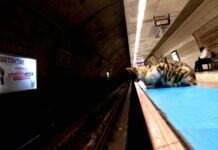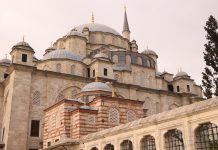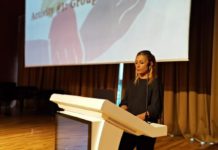Phoenix Ancient City near present day Taşlıca lies far from the touristic bustle of Marmaris. This semi-isolated site is a treasure trove of archaic delights camouflaged within a unique, rocky terrain. Culturally and historically rich, Phoenix became the inspiration for a unique archaeological project rooted in the belief that archaeology should be accessible to everyone. With great curiosity, I caught up with archaeologist Dr. Asil Yaman, head director of the Phoenix Archaeological Project (PAP) to learn more about Phoenix and this innovative project aimed to protect the region’s distinct cultural heritage and encourage us to think about sustainable archaeological practices.
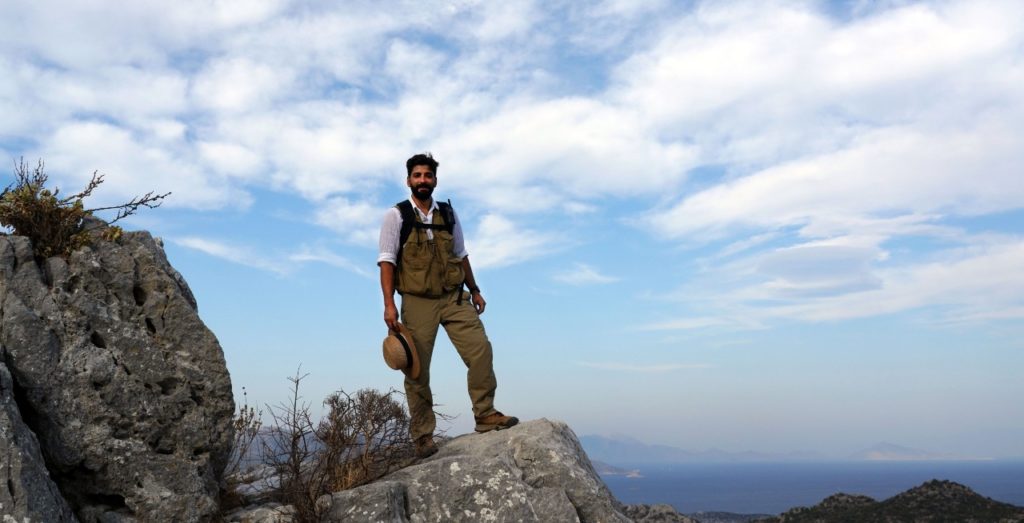
Can you share a bit about yourself and your experience with archaeology?
I was born and raised in Izmir. It’s a multi-cultural and historic city, ancient Smyrna. The city and the people inspired me so much during my childhood. Since the beginning, I always loved to learn about history.
I studied archeology at Ege University and graduated in 2008. I continued my education at Muğla University where I also worked as a research assistant for more than six years. After completing my MA and PhD there, I moved to the US for doctoral and post-doctoral research at the Penn Museum in Philadelphia. Currently, I am a consulting professor in the Mediterranean Section at Penn Museum and director of the Phoenix Archaeological Project (PAP).
I have worked in the field for more than 18 years and on several different field projects in Western Turkey starting in 2003. My first archaeological project was at Aigai Ancient City in Manisa where I served as a field archaeologist for more than six years. As a research assistant, I worked different projects in the Southern Aegean region at Xanthos and Arycanda. I also worked at Gordion Ancient City as a field archaeologist and pottery specialist during the 2018-19 seasons. For my post doctorate, I focused on the Carian Chersonese (Bozburun Peninsula) and I worked at the ancient cities of Tabaea, Pedasa, and Amos until 2019.
How did you learn about Phoenix and when did you first visit?
I knew about Phoenix through my readings, but I was able to visit in 2018 when I was working at Amos Ancient City. The archaeological remains and the landscape were amazing. I fell in love at first sight.
Why did you choose to work in Phoenix?
There wasn’t any intensive scientific research done here ever before. This was the first and main reason for me. I wanted to investigate the scientific problems of the region and compare them between Rhodes Island and inland Caria region. The holistic structure of the region and the archaeological problems attracted me. I wanted to work here to understand here.
What interests you most about Phoenix?
Besides the scientific questions, the rural lifestyle and the uniqueness of the region had also attracted me. The unique burial culture in Phoenix is also of interest. People here used step-based pyramidal tombs and it’s the only example in Western Anatolia.

Can you share a brief history of Phoenix?
We have some evidence that shows Phoenix was founded in the Archaic Period, late 7th to early 6th century BCE, some 2,600 years ago. In the beginning, it was an independent town, but part of a political organization of the Carian Chersonesos, the regional, federal union. People lived, worked and worshipped in Phoenix.
Economically, Phoenix had close ties with other cities in the peninsula. They shared common beliefs and came together throughout the year in cultic areas such as Kıran Gölü and Kastabos. People mostly produced agricultural goods: figs, almonds, olives, olive oil and wine. They exported these goods all around the Mediterranean Region.
Culturally, Phoenix was influenced by the Rhodian Effect (the island of Rhodes ruled this area for more than 500 years) meaning it had an island culture even though it’s connected to the mainland. From the beginning of the 4th century BCE until the end of the 1st century BCE, Phoenix was ruled by the Rhodian city Camiros. During the Hellenistic Period, Phoenix flourished and the people became wealthier.
Archaeological and epigraphic data shows us that the city was never not abandoned during the Roman Imperial Period and the settlement activities seem to have continued during late antiquity. The pottery sherds and the architectural remains point out that the city was active in the Byzantine Periods. The people of Phoenix lived in the territory, in Fenaket, which derived its name from Phoinikidou, until 1923.
What happened to the people of Phoenix?
I believe some of these people are still living in Taşlıca! Nearly every century, strong and deadly earthquakes hit the city and caused damage. I strongly believe that the people of Phoenix continued to live here until today, transforming the ancient remains. We are still exploring the missing pieces of the puzzle trying to enlighten the shadows of history of the region.
As of now, what structures are visible in Phoenix?
We can see remains from at least five different cultural groups that existed in Phoenix. Firstly, I should mention the whole cultural landscape is covered with ancient agrarian terraces and farmhouses which shows the agricultural production based rural lifestyle of the city.
The Apollo Sanctuary (later transformed into a Byzantine Church) is one of the best-preserved ancient remains of the city. This sanctuary includes an altar dedicated to Eileithyia/Ilithyia, the Greek goddess of childbirth and midwifery, related with Artemis. Inscriptions on the sanctuary and altar are preserved and still visible on the wall of the Byzantine church. Epigraphic sources show that there are also some sanctuaries dedicated to Dionysus, Athena, Zeus and Aphrodite at Phoenix.
There is a fortified acropolis supported by bastions on Hisar Tepe with a fascinating, panoramic view of Symi Island. This refers to the tastes of the ancient rulers of Phoenix. There is a public building dated to the Middle Ages at the south end of the acropolis. There are at least two sacred areas that are still visible on the eastern side. Hellenistic defense towers are also still visible in the south of the city consisting of a border of the territory with the neighboring ancient city of Casara.
Our fieldwork studies in 2021 were carried out between the Apollo Sanctuary and acropolis. These studies revealed that three necropolises covered with step-based pyramidal tombs were located in the north, east and south directions of the city. We also explored a new sanctuary in Gedik that is possibly linked with an ancient harbor. Moreover, the ancient roads that connect the archaeological remains and the neighboring cities tie up the cultural routes in Phoenix today.
Has Phoenix been properly excavated before? Why not?
No. There were some minor studies done, mostly epigraphical, but I’m happy to say that Phoenix Archaeological Project (PAP) is the first scientific field work at Phoenix. To be clear, we are not excavating yet in Phoenix. We are conducting intensive archaeological surveys that will continue until 2026 with support by interdisciplinary sub-projects.
The topography of the city is hard to work. It’s far from Marmaris and out of the comfort zone.
Why is Phoenix important?
Phoenix is a great example of an ancient production-based lifestyle.
Furthermore, the cultural exchange with the Rhodes and Dodecanese Islands throughout the ages and their impacts on urban, sacred and burial customs make Phoenix unique. The political and socio-economic organization of the city inherited from the archaic period along with their impacts on the settlement patterns are worth enlightening scientifically by new generation archaeological approaches.
On the other hand, the oral history and the other traditional elements at Phoenix show the cultural diversity. Unfortunately, the archaeological remains and the intangible heritage are endangered because of the urban and agricultural expansion in the region today. We are losing the ancient traditions. It’s crucial to preserve it, without a doubt, in order to have a sustainable future in the region.
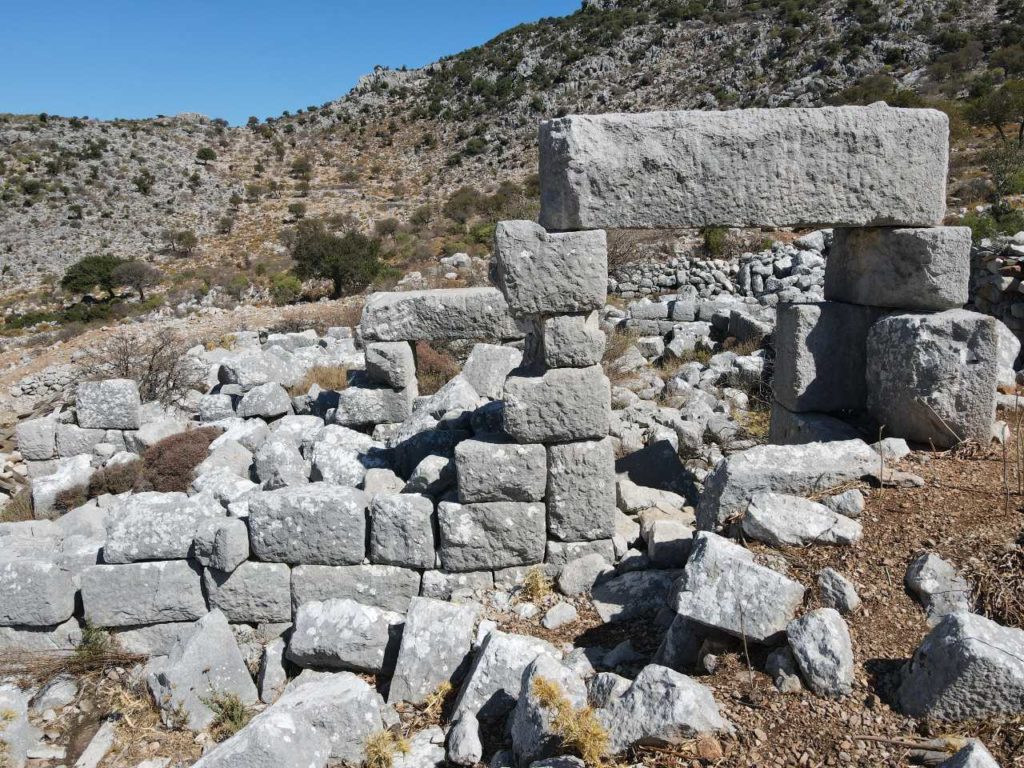
Can you share about the Phoenix Archaeological Project (PAP)?
PAP is an interdisciplinary and multi-national cooperative survey project that I am directing since 2021. The project is designed to identify and document the tangible and intangible cultural heritage and reimage the settlement pattern and land use from antiquity through the modern period, including today. For now, it’s a seasonal project because of the budget. We worked there for three months in 2021 from July to October. In the near future, we will work all year-round. We are developing long range sub-projects collaborating with various areas such as geo-archaeology, architecture, archaeoseismology, ecology, anthropology, archaeometry, sociology and history to document everything and investigate the whole iconic landscape of the area.
PAP is designed as a new generation project that not only aims to research the archaeological remains, but also preserve the heritage and biodiversity of the region by having social responsibility projects. Obviously, the climate is changing radically and we try to make comparisons between the ancient landscape and today’s landscape to have a micro-solution.
There are several problems we need to address. The region is entirely open to illicit excavations and looting of artifacts. We should protect this heritage, so what can be done? We created a cultural and ecological heritage education program for children to have a sustainable future; to protect the planet and protect the ruins. Moreover, we started a contemporary art program to raise awareness and focus on collecting memories. Within the scope of the program, the family memories of the local people will come alive with the collective cultural backgrounds of the region: playgrounds, walking paths, meeting places, botanical assets and food culture discoveries.
How did PAP form?
I dreamed the dream and created this project theoretically. For the past two years, we have been developing this project together with numerous scientists, artists, professionals and volunteers from seven different countries and thirteen institutions. We agreed that to create a sustainable future, we needed to create a new generation project that focused not only on scientific questions, but also touched local people. Day by day, interest grew and the ideas that we shared became a reality. Together, we created a great infrastructure and conducted field surveys in 2021. To be clear, I’m not directing all of the sub-projects. It’s a fact that there is no place for a one man show in the 21st century and it’s impossible to be successful. That’s why every sub-project in PAP has its own leader and sub-team. We share our visions and work together.
Last Fall, we started to transform the former elementary school in Taşlıca into an archaeological research center with a research library. We also plan to create an archaeo park in the town square for children in the near future, but we need more financial support to complete the infrastructural works at the research center. We started an online fundraiser so anyone interested in donating can reach us through our official website: https://www.phoenixprojesi.com/en/homepage/
How is PAP different from other archaeological projects in Turkey?
In Turkey, there are a couple of hundred archaeological field works including excavations and surveys. PAP differs from them with its new scientific approaches and administrative structure. I strongly believe that the public programs we are carrying out are helping people socio-economically. For example, hiring women to have social justice in the region. Also, educating the children plays a crucial role in preserving the biodiversity and archaeological heritage.
Briefly, PAP represents the new generation archaeology, not just focusing on the material culture and scientific problems, but also the local human stories, the oral histories and contemporary art practices.
If we make progress with this model, it would be a model for future archaeological projects and this might inspire our students to do better. We need to share all of our data and have a democratic organization. If we do it well, we will inspire and change the system.

Why is PAP important?
The uniqueness of the project. It’s something different, unusual. We are involving and touching local people. We share the data with locals, with regular people. We made psycho-geographical tours together, that’s something. We are not teaching, we are learning together, we share our food. We are on the same level sharing everything, we learn from them too. We are building an open and transparent communication with the locals. Our motto is “Archaeology for everyone.”
What has been your experience with the local people of Taşlıca?
The last two years, I spent so much time in Taşlıca’s main square and started to build friendly relations. I told them, I’m here for you, I want to do something for you, and I will learn from you, not just teach you. You are a part of this project and I will share everything with you. They are so friendly with us and it makes us happy to share experiences. We’ve established a good relationship with the people.
In September of 2021, we started a cultural heritage program to educate the children of Taşlıca with creative drama. The program lasted 3 weeks with nearly one hundred children. We visited the Marmaris Museum together. We also collaborated with the Mediterranean Conservation Society and they gave ecological seminars to the children about the flora and fauna of the region. Especially after the wildfires in and around Marmaris, it was essential because children had trauma, like us, and those seminars made everyone feel better. The children realized we have something here to protect and they also learned about the importance of living among the ruins.
What have you learned about Phoenix from last year’s archaeological survey?
Archaeologically speaking, it was nice to explore the possible locations of some sanctuaries because nobody had mentioned them before scientifically. We discovered that the city had at least three necropolises, and we explored some ancient paths connecting the city with the harbors. It was exciting to explore the Gedik harbor and a public/sacred building.
Besides the archaeological materials, we have learned new stories from the people. We met with new people and had new experiences. We became the local in the end. That’s what I learned. It makes me so happy. It was an amazing experience for all, without a doubt.
What about funding for PAP?
Luckily, the Marmaris Chamber of Commerce is providing minor support for our research. However, we are seeking financial support for our archaeological fieldwork and social responsibility projects, like educating children. As you know, we want to build a sustainable future in the region. For this, we need to continue our programs systematically. We want to hire more local people, especially women, for the project. We want to encourage the younger people to stay here to make a better town.
Goals for 2022?
We plan to conduct field surveys in the southern part of the city reaching out to Serçe Bay to understand the harbor organization and the connections to other surrounding ancient cities. We hope to continue our education program if we can find funding. We will also have philosophical workshops open to everyone and continue our oral history project talking with the local elder population.
To learn more about Phoenix Archaeological Project or provide support, please visit:
https://www.phoenixprojesi.com/en/homepage/
https://www.instagram.com/phoenixprojesi/

